Abstract
Five healthy subjects were exposed to known concentrations of trichloroethylene (T.R.I.) for five hours. The amount retained was calculated. The excretion of the metabolites monochloroacetic acid (M.C.A.), trichloroacetic acid (T.C.A.), and trichloroethanol (T.C.E.) in the urine was measured over the next seven to 14 days. Metabolites excreted represented an average of 73% of the dose of T.R.I. retained (M.C.A. 4%, T.C.A. 19%, T.C.E. 50%). The amount and speed of excretion of metabolites in one experiment was increased by giving glucose and insulin. The diurnal variation in the excretion of T.C.A. is emphasized.
After the vapour of T.R.I. has been inhaled the metabolites T.C.A., and M.C.A. are excreted in the urine. Trichloroacetic acid was first detected in canine and human urine by Barrett and Johnston (1939) and Barrett, Cunningham, and Johnston (1939), trichloroethanol was found in canine urine by Butler (1948) and in human urine by Souček and Vlachová (1954). These authors also found monochloroacetic acid to be excreted.
A number of quantitative studies of the formation of the metabolites of T.R.I. have been made. Most interest has been taken in trichloroacetic acid. The prolonged excretion (10 to 14 days) of T.C.A. even after a single exposure to T.R.I. is striking (Barrett et al., 1939; Forssman, 1945; Forssman and Ahlmark, 1946; Souček and Pavelková, 1953). The excretion of the sodium salt of T.C.A. introduced into the organism is equally slow (Powell, 1945; Ahlmark and Forssman, 1949) and has not been satisfactorily explained. Fabre (1949) and Fabre and Truhaut (1952) assumed that it became linked to the red cells but experiments in vitro by Souček (1955) did not confirm this view although linkage to the plasma proteins was considered possible (Souček, 1954).
The gradual increase of the T.C.A. concentration in the plasma and urine for some time after the end of the exposure to T.R.I. is similarly unexplained. Ahlmark and Forssman (1949, 1951) found the excretion of T.C.A. began two to four hours after the beginning of exposure but Souček, Teisinger, and Pavelková (1952) showed that it could be detected within a few minutes. Thereafter it is agreed that the concentration of the T.C.A. in the urine rises to a maximum at 24 to 48 hours and subsequently decreases exponentially for a number of days.
The amount of T.C.A. formed from retained T.R.I. appears to vary with the species. In dogs the T.C.A. excreted accounts for 5-8% of the T.R.I. (Barrett et al., 1939); in rats for 4% (Forssman and Holmquist, 1953); in rabbits for 0·5% (Bartoniček and Souček, 1959). In man higher values have been found: 6-16% (Ahlmark and Forssman, 1951); 7-27% (Souček et al., 1952); 13% (Grandjean, Manchinger, Turrian, Haas, Knoepfel, and Rosenmund, 1955).
Trichloroethanol was shown by Butler (1949) to be eliminated in dogs mainly bound to glucuronic acid, and the amount excreted was three to four times that of T.C.A. The relationship of T.C.A. to T.C.E. has been found in man to be 1: 2 to 1: 4 (Souček and Vlachová, 1954); 1: 2 to 1: 7 (Teisinger, Stýblová, and Vlachová, 1955); 1: 0·5 to 1: 5 (Bardoděj and Krivucová, 1958).
In this paper we have investigated the quantitative relationships of the formation, and the course of elimination in the urine of all three trichloroethylene derivatives following inhalation of its vapour.
Full text
PDF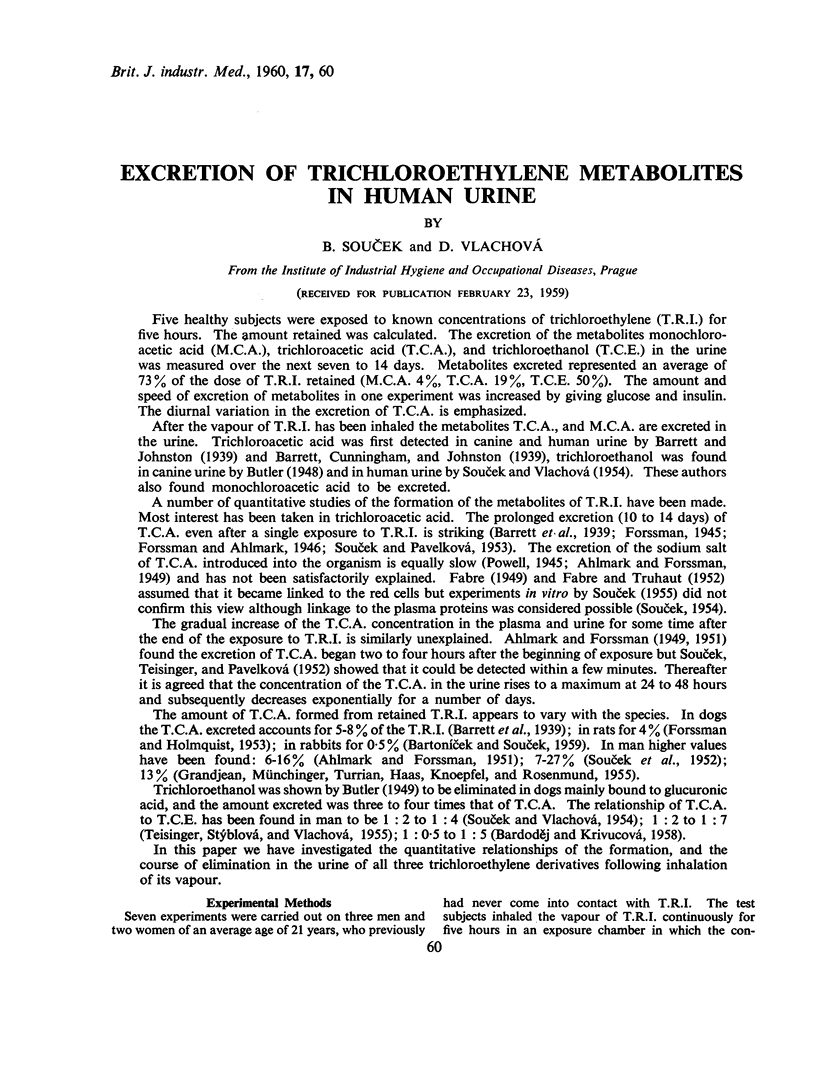
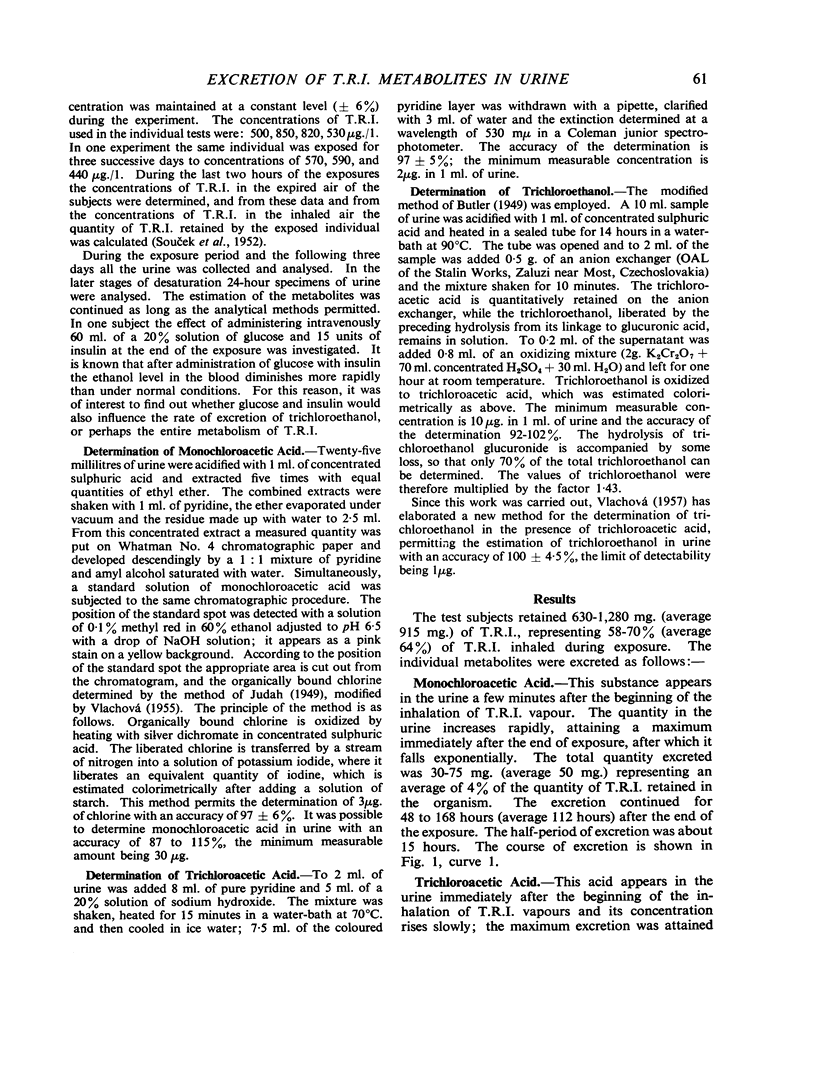
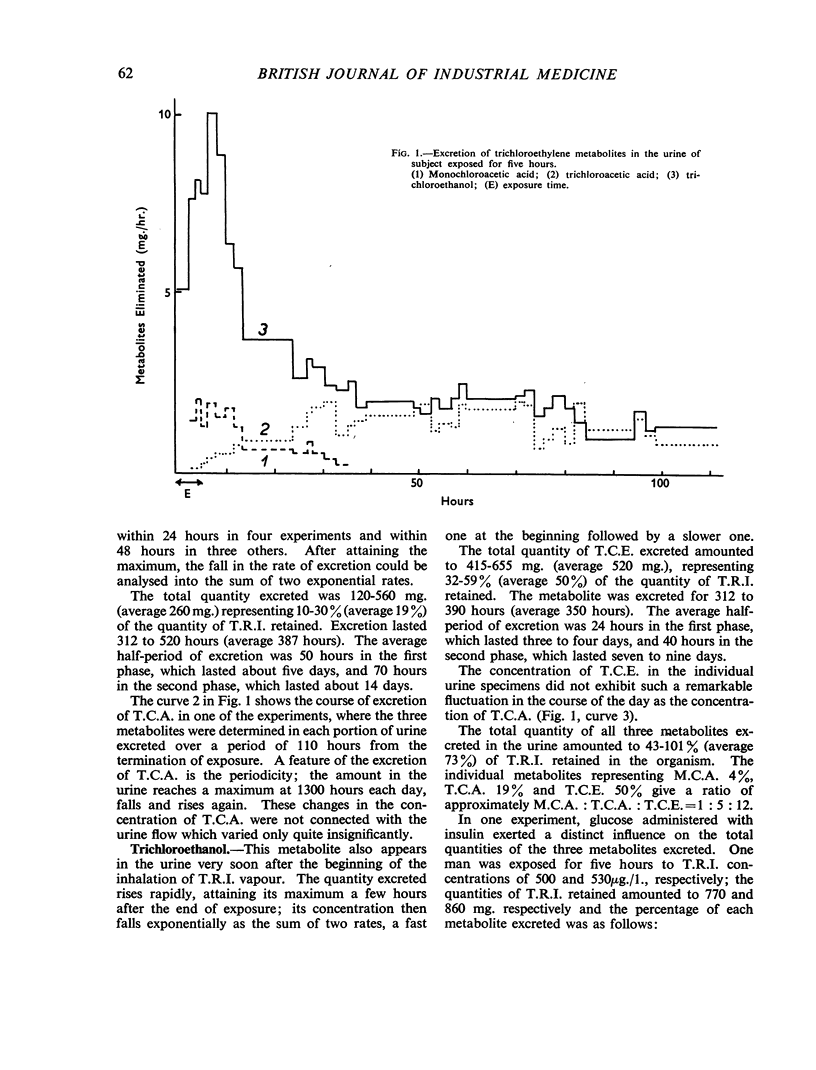
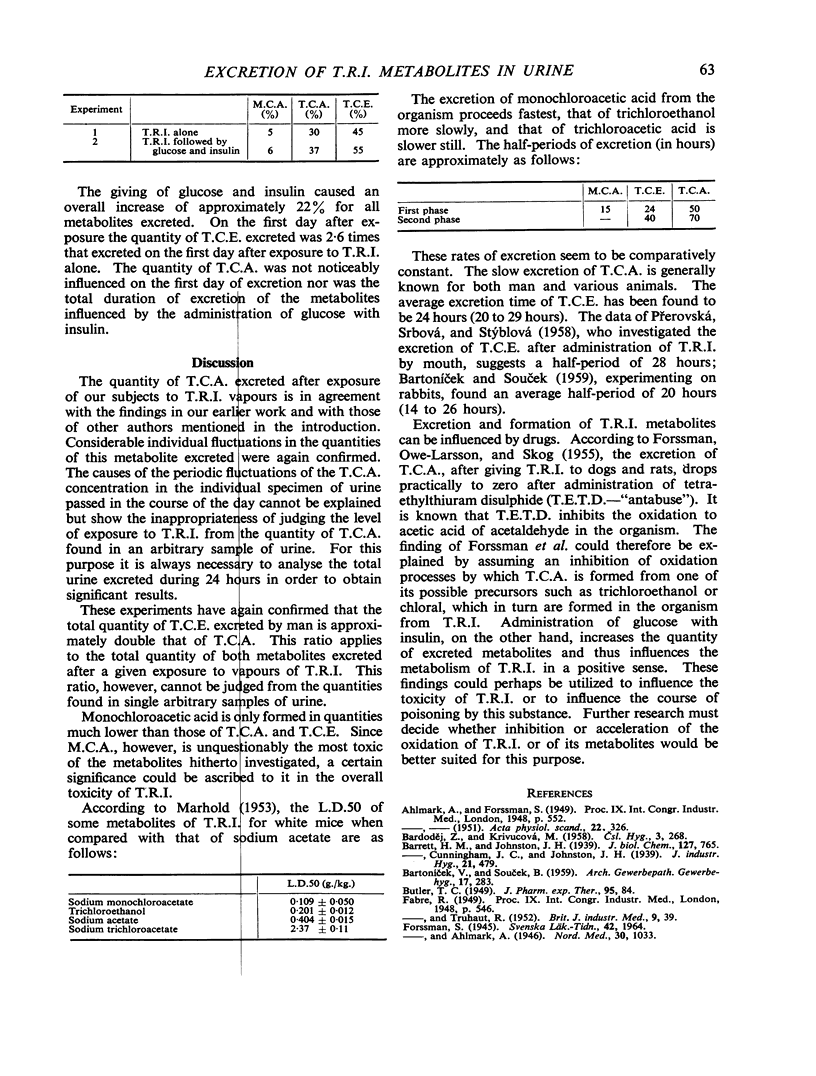
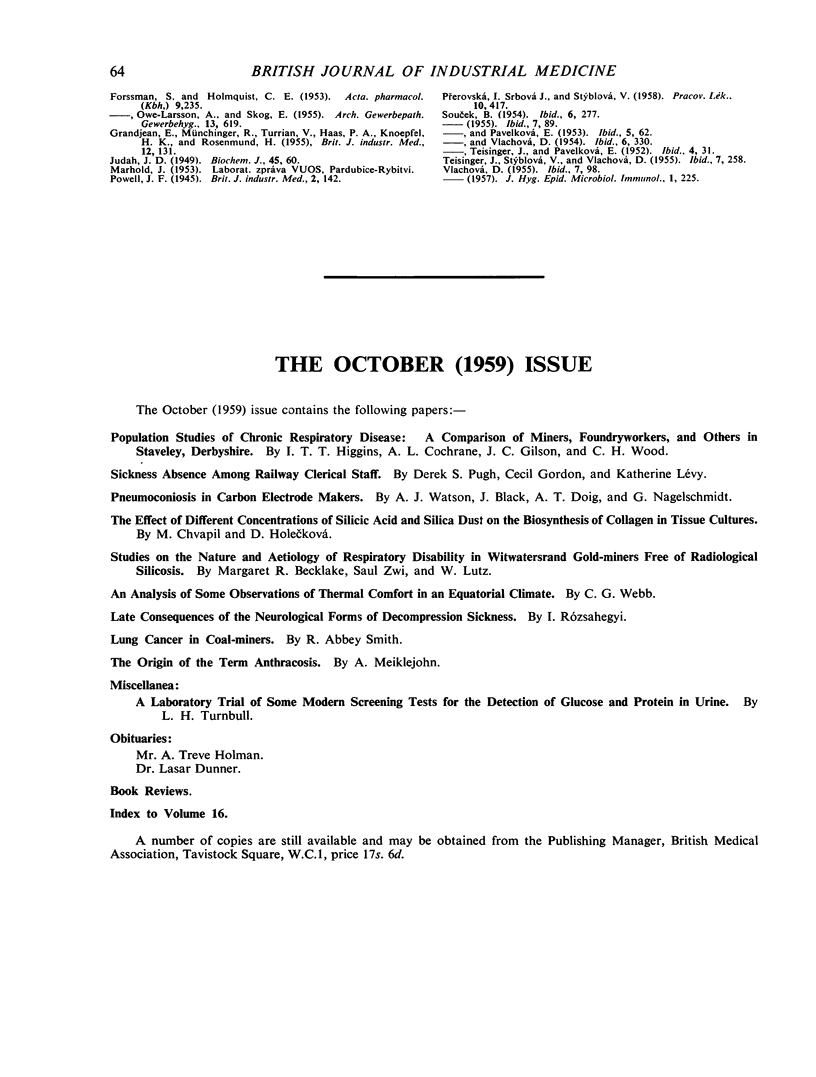
Selected References
These references are in PubMed. This may not be the complete list of references from this article.
- FORSSMANN S., HOLMQUIST C. E. The relation between inhaled and exhaled trichlorethylene and trichloracetic acid excreted in the urine of rats exposed to trichlorethylene. Acta Pharmacol Toxicol (Copenh) 1953;9(3):235–244. doi: 10.1111/j.1600-0773.1953.tb02950.x. [DOI] [PubMed] [Google Scholar]
- GRANDJEAN E., MUNCHINGER R., TURRIAN V., HASS P. A., KNOEPFEL H. K., ROSENMUND H. Investigations into the effects of exposure to trichlorethylene in mechanical engineering. Br J Ind Med. 1955 Apr;12(2):131–142. doi: 10.1136/oem.12.2.131. [DOI] [PMC free article] [PubMed] [Google Scholar]
- TEISINGER J., STYBLOVA V., VLACHOVA D. Význam stanovení trichlorethanolu v moci u pracujících s trichlorethylenem. Prac Lek. 1955 Sep;7(5):258–260. [PubMed] [Google Scholar]


